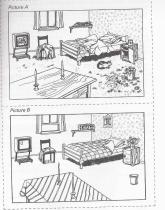Last time I checked, there were not too many materials for teaching Passive. I mean, for teaching Passive adequately, and in a practical and possible-to-take-out-of-the-class manner. Somehow, speaking about animals, doing a geography quiz or discussing a process of coins being produced didn’t feel exactly right – not for my current students, anyway. With the lady I have in mind, we’ve already identified the need to refresh her passives, because she has already made mistakes using in in a number of situations, and when we were discussing them, she was not too clear about the forms and usage.
So today I began looking for some nice starting point. As I’m dealing with an individual and high-level class, this makes most of the usual (and even some really interesting and unusual things) a bit pointless, so I wasn’t really left with a lot of choice.
But having researched here and there, I’ve discovered some nice things. A small collection of gems, in fact.
First credit goes to Penny Ur and her book “Grammar Practice Activities”. There she offers another use for the customary “information gaps” –  why not compare 2 pictures and to say what was done (or what will be done if we take the 2nd picture for a future)? it’s so easy, but it didn’t occur to me before, I have to admit.
why not compare 2 pictures and to say what was done (or what will be done if we take the 2nd picture for a future)? it’s so easy, but it didn’t occur to me before, I have to admit.
I haven’t decided yet if I am going to use the pictures or to take the idea further to HR area. In the latter case we might talk about somebody following his/her career path:
first he was admitted to university, then he was promoted, he was recognized as the best in his area, etc…Another aspect I’ve been thinking about – and also found in several different books – are the newspaper headings. reformulating them and making into full sentences. Will have to exploit this approach definitely. I think in my case working with headlines and turning them into full sentences (and accompanying it with some specualting on the contents) might work out nicely, after having cleared all the doubts and questions about the passive forms.
I think I’ll start with a picture and some questions leading to using passive structures
(like How is a position usually filled in your company?I’ll update the post if I find more gems to complete my humble collection, and I will be happy if you share what you do to teach passive in an interesting and practical way!




That’s a nice idea! I used a similar one with my intermediate student. He’s a programmer and needs passive voice to describe various workflows and procedures. When we covered passive, I noticed that he keeps making mistakes with future passive, so I came up with the following task: I found two versions (old and new) of one travel agency website (he was working on a similar project at that moment). So he had to explain to the customer (that was my role:) what was done on the website (what improvements and changes were made) and what will be done in the nearest future. Another idea was to compare the old and the new versions of websites (I took the website of Apple). Both these tasks turned out to be very practical and useful for him.
Hanna, thanks for passing by! Sorry the answer took so long!
I’ll remember the idea of comparing 2 website versions, that sounds quite original and cloase to real life))
Thank you for your ideas. I was teaching the passive the other day and I must say it’s not my favourite. I was teaching an upper intermediate class and they need it for a speaking exam. Talking about processes, for example what happens to a bottle when it is recycled isn’t very exciting. We ended up talking about how often we get our hair and nails done! I will definitely use your ideas in future classes.